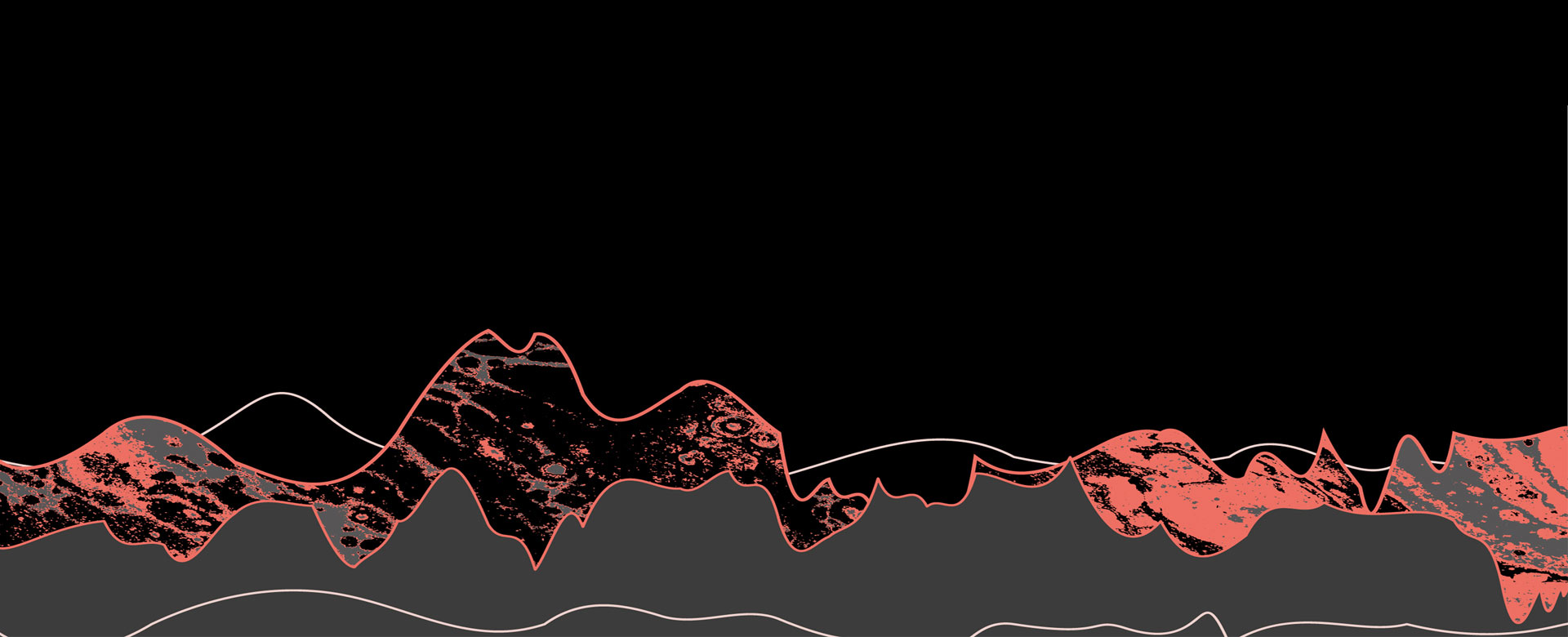TITLE
Crossing Boundaries – Multidisciplinary Creation in the Arts
TOPICS
Cross Disciplinary Collaboration,
Residency, Audience Interactive Creation
TIME & DATE
19 Oct, 2pm – 6pm
20 Oct, 10am – 12 noon
VENUE
National Art Gallery, Auditorium
In conjunction with INXO Arts Fund 2019 Award Ceremony, INXO Arts & Culture (L) Foundation initiated INXO International Forum 2019; a two-day panel discussion session which brings together accomplished artists, researcher and producers across art forms to develop conversations on cross boundaries multidisciplinary artistic creation. 8 panellists from 6 countries are invited to stand at the forefront of their chosen fields of expertise, including Australia, South Korea, Japan, Singapore, Indonesia, as well as Malaysia.
INXO International Forum 2019, aimed to practice “5E” elements which are:
Express
to establish conversation in contemporary artistic creation
Exchange
to maintain a platform for knowledge sharing
Enhance
to strengthen international network of stakeholders
Experience
to promote originality, creativity and innovative thinking
Engage
to raise awareness towards cross disciplinary arts
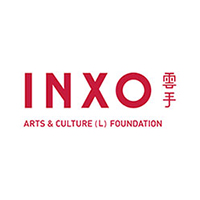
A Project Of
INXO Arts & Culture (L) Foundation
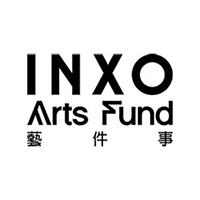
In Conjunction To
INXO Arts Fund
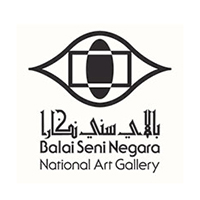
Venue Partner
National Art Gallery
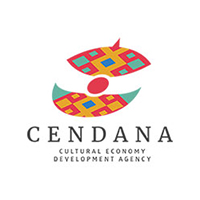
Strategic Partner
CENDANA
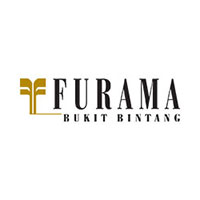
Hotel Partner
Furama Bukit Bintang
Public Panel Day 1: Artistic creation in a cross disciplinary approach
Session Content
Introduction:
Moderator Shawn Chua introduces the topic, explaining that the discussion will detail the cross-disciplinary practice, the forms in which they take place and how it is important in the present day. He then introduces the panelists and himself, then outlines the agenda for the panel.
Presentation:
Cheryl Stock
Cheryl Stock began her presentation by talking about her career at the moment, one that is mainly focused on supporting the future in terms of supporting younger artists, both the new emergent ones and the mid-career artists.
Her presentation, titled ‘Siting Interdisciplinary Collaborative Performance Practices – connecting with place / collaborating with intergenerational communities and artists’, discusses large-scale collaboration with a focus on site-specific performance.
Collaborative practice while challenging and sometimes risky, can serve as a space and also a means of connection: it can create ‘learning places’ that hold and manage knowledge and creativity, while also facilitating the growth of ‘professional friendships’ due to the proximity and ‘new avenues of understanding’ in the process of collaboration. Communication is key in collaborative practice: here Cheryl Stock briefly discusses the ways language functions in collaboration, noting the importance of listening, adjusting, and adapting, especially when faced with the differences in disciplinary and operational languages. Language in the creative process is both a communicative tool and a creative one: visual, kinaesthetic and textual languages can mediate and bridge gaps via metaphor and abstraction. Interdisciplinary collaboration is one that allows for breadth and depth in creativity: specialists in collaboration can find an interdisciplinary language based on principles they have in common. In the spaces where they find that language they also find the questions that allow access to alternatives that examines the existing conventions in their respective disciplines. The multiple perspectives in interdisciplinary collaboration are important in that they afford opportunities for transformation in individual practice; in turn, the collaborator-artists create together multi-layered narratives that enrich the work and meaningful connections in the form of professional friendships are forged.
The case study presented by Cheryl Stock is a work she directed, produced and created, Twilight, a site-specific performance in Townsville for the DanceNorth 30th Anniversary season, in which she worked with Ng Chor Guan as her musical director and composer. The piece engages the different groups in the local community as performers, linking them together via their connection to the site, the sea, sky and earth becoming the common concept or theme that is open and allows for agency and interpretation. In Twilight, the audience travels with the performance, journeying on the different points on the site, which were taken up and lead by artists and community project leaders. The project development took longer than a year, with two intense periods of rehearsal and a lengthy process of engaging with the local communities to look for participants. The site determined many of their decisions, it being a site that is indigenous and well-loved by the local communities.
The second half of her presentation details the varying smaller sites and participating groups: such as negotiations with the indigenous communities and allowing agency to the various groups taking up the smaller sites while also working with professional artists. Starting out with Ng Chor Guan’s Mobile Phone Orchestra, the audience moves along from the promenade and into the first site, ‘Welcome to The Country’, on Wulgurukaba and Bindal land, where an elder from the community welcome the audience. A site chosen by the women of the Ngulumburu Boonyah Women’s Dance Group, came next, titled ‘Origins’, and Cheryl Stock did not see the dance until the week before the show, and instead spent a lot of time sitting together beneath a tree telling stories to build trust. The third site, titled ‘Ascending Twilight’, was presented on a hilly area by the Kirwan State High School dance students; the site was not easy to find as it had to correspond to a specific idea, and also be accessible for people with limited mobility. As the audience travels along there were always sights, and music, or they would be making music themselves on their own mobile phones. Dancenorth dancers were responsible for choreographing the sites, and with the next site, they worked with the Forever Young 60s group, it oldest member is 84, and were all very shy but wished to be a part of the performance; the choreography was then based on the hand movements they made while telling stories, and Cheryl Stock notes that this is one of the ways stories and the site serve the choreography. Next was the fifth site ‘Sensing the Sky’, which happened at twilight, performed by independent dancers in the region. Apart from being led visually, the audience can also be led by sound, and in the sixth site, ‘Dusk Dialogues’, presented by the Barrier Reef Orchestra Brass Ensemble, played music alongside the wind that was sometimes present.
It became dark by the next site titled ‘Starlit’, led by the Kith and Kin. Endeavour Cootharinga Disability Group, who had lights on their fingers as part of their performance. These groups all rehearsed separately but came together to form a very big collaboration. The next site, ‘Night Calls’, was a call and response site, set in a gulley. Then came another indigenous group with the ninth site titled ‘At the Grotto’, the Erub Kara Ged Dance Group were family and performed as a family. Cheryl Stock says that in the process of creating the work, she and Ng Chor Guan had to let go a lot as each collaborating group had their own ways of participation and rhythms, and she feels that it is the community activation that made the show. The tenth site, ‘Fleeting’, by the Pimlico State High School dance students, had LED lights on their costumes so that the audience, who were below the performers, could see them. Next was a choir group, the Aquapella World Music Choir, and their site was titled ‘Held in The Light’; the audience would be tired by then and there were stools for them to sit on to listen to the music. The next site, ‘Surprise Sitings’, featured parkour artists and Borys Zagrocki bike trails; this group was found because they were members of the community doing parkour at the site – later two members of their group took classes with Dancenorth who also has a dancer-choreographer who is a parkour artist. The second last site is a Dancenorth contribution titled ‘Concrete Grass’, and the performance ended with all the performers coming together at the final site ‘Dispersal’, featuring the brass ensemble, and the performers dispersed with the audience together.
‘Twilight’ is a large scale but intimate performance, as each group owned their site. Cheryl Stock recalls that during a site walk an indigenous woman said ‘I understand now, it is a spiritual journey of site’. She adds that working with a mixed group of indigenous and non-indigenous collaborators is not easy, requires building of trust, and cannot be hurried.
She concludes her presentation by acknowledging the creative team, the volunteers, and sponsors. She restates that distributed leadership was key in the creation of the work; that it was important for project leaders to be responsible for their own sites in order for the large collaboration to work. Recalling the cast party after the performance, she notes that everyone felt comfortable on the site, and while they were celebrating the 30th anniversary of Dancenorth, it was also a celebration of community. ‘Twilight’ won the Australian Dance Award for Outstanding Community Dance Work.
Jisun Park
Jisun Park’s presentation discussed her producer group, Dot, and definitions and functional uses of ‘interdisciplinary’ and ‘multidisciplinary’ in the performing arts sector in South Korea. The producer collective, Dot, comprises of four producers working independently together in a horizontal structure with no ‘leader’ position; Jisun describes this formula as a new and experimental way to collaborate and work together.
She then elaborates briefly the art policy in South Korea, and mentioned that in the relatively conservative scene of Korea the arts is segregated and very genre-bound. While it has improved slightly with the inclusion of interdisciplinary arts as a category in funding since the early 2000s, it is also a fluctuating one that seems to be regressing in recent years. This regression happened in spite of the growing number of interdisciplinary artists in the past 10-15 years. Jisun Park points out that artists who work interdisciplinarily focus on the contemporary world: often their work questions society, language, and ways of living; they are not just political and social questions, but questions for the everyday. Interdisciplinary art also brings the audience into focus; where conventionally they are passive and sitting, as spectators and recipients of information, interdisciplinary art considers the audience and their engagement in the process of creation. The audience is commonly considered a target for marketing, but in interdisciplinary art there is a centering on communication between artist and audience, and the focus is on audience engagement instead of the audience measured in numbers.
Jisun Park brings up the question of why in her presentation: why change and why move away from conventional theatre? Why now? She suggests that among the many reasons, the complex and rapidly changing times is a major factor; globalisation has reconstructed the world and the way one connects to another, and also the way information is received and processed.
Interdisciplinary art is then facilitated by the hyperconnectivity brought upon by technology: mobility can now also be defined horizontally, where artists can find one another on the same levels but in different geographical parts, where the collaboration is also horizontal, and the audience becomes an active collaborator too. Here the boundaries around art bend and break down, and new innovative methodologies for creation arise. Briefly returning to the discussion of interdisciplinary art in Korea, Jisun Park notes that compared to the early days of collaborative practice, which are usually between two artists or two forms, now there is more collision and possibilities of merging, creating hybrids, and synthesis.
She currently works mainly on facilitating creative platforms for young artists, and presents two case studies: the first is ‘Plug-in City’ a project that started in 2017 and is still being developed. It involves a creative producer, a sound artist, and collaborations with both artists and members of the public. A site-specific piece, the audience is invited to interact with the theatre space, walk around to find hidden stories and learn about individuals living in a city controlled by hidden systems and how their memories work in urban life. The sound, game, and narrative of this piece were all developed together, with the audience’s experience in mind: each participant will have a unique encounter, and she found that in general the older generation needed more assistance with experiencing the work.
Her second case study is another site-specific work that is also based on game engine, and involves VR and a 3D sound system. Titled ‘Index for the Wonderful Adventure of Nils’, the piece is based on a Swedish children’s book, and asks that the participating audience find Nils, the main character, to learn what happens to him after his return. They begin in a tea shop where they are given questions and have to find a room of secrets to learn the story of Nils. In the process of creation, the artists and engineers learned to work with their different technical languages, and the performers had to adapt to new ways of creation and performance; the process took six months.
Jisun Park concludes her presentation by sharing about a theatre lab as an example of new ways of creation: the Samilro Chango Theatre Lab is a space for artists who wish to meet and create work together. They come together to develop and create work based on questions and ideas, such as ‘How do we use technology as a tool in creation?’ In a workshop the participating artists learnt that technology can be used not simply to facilitate creation, but as a means to critique society. Another idea she discussed is that of AI theatre, perhaps in the next century: How would AI theatre be different? She also discussed the changes in the way language is used, especially how communication has become shorter; in this developing idea, participating artists experiment on language, utterances and sound, and each created a short prototype of a work. This theatre lab is a space and platform for people to gather and discuss society and art, and Jisun Park offers the theatre lab as an example of how work created based on discussions is a new, innovative and interdisciplinary way of creating new work.
Ng Chor Guan
Ng Chor Guan opens his presentation by talking about the multiple meanings his name can take: his family name Ng is a transliteration of a surname in the Hokkien dialect, the first character of his name Chor means ‘choir’ in German, and this access to many meanings is a result of having grown up in a multicultural society and learning that text and sound is arbitrary and can mean different things in different languages. With his incubator lab, Toccata Studio, there are also many meanings in the name: ‘toccata’ is a musical form, but it also is derived from the word ‘toccare’, meaning ‘touch’ in Italian, speaking to the artists urge to touch and connect via art. When broken down into sounds, ‘tok kata’ in Malay means ‘the elders speak’, a reminder to connect with one’s roots, and in the Hokkien dialect, ‘toka ta’ bears a meaning adjacent to that of Malay, meaning to ‘step on ground’, to stay grounded.
Toccata Studio began as an experimental lab, and has to date created 100 works; as an example, he presents the piece ‘Space Age’, a contemporary classical chamber work manifesting as a performance with visual projections. It is inspired by a childhood dream of wanting to be an astronaut, and also by the events surrounding the creation of the work: in 2008 the first Malaysian astronaut entered space. Ng Chor Guan believes that creation is often from a sincere place, and describes the arts and theatre as a scene for space transformation, bringing people into dreams, or new spaces, which can be in the case of ‘Space Age’ a futuristic and nostalgic one.
As a second example he presents ‘Mobile Phone Orchestra’, which began developing in 2011 as an exploration of the individual’s connection to their mobile phone. He also wished to involve the audience as participants and as part of the performance, while utilising the idea of space transformation once again. He jokes about conventional classical music: as a classically trained composer he often wonders why people would fall asleep in music halls, and suggested that perhaps classical music is tedious, or the halls too comfortable and the audience are too uninvolved in the music and therefore lose interest.
In the first instalment of the ‘Mobile Phone Orchestra’ he collects sounds from Georgetown, Penang Island, including sites such as the Penang River, Penang Hill, the Malacca Straits, and reinvented them to be sounds with hidden meanings, sounds that can foretell the future while archiving the present times. In the first performance of this piece more than 300 people participated and played music from their mobile phones, transforming an abandoned space next to Komtar temporarily into the soundscapes of a rainforest – a reminder that where Komtar stands there used to be a forest.
Mobile Phone Orchestra in its other variation, MPO: I’m Here Where You Are, is one that ‘hacks’ into space, an immersive experience for the audience. First shown in SS2, a suburban housing area 20 minutes outside of Kuala Lumpur, it is a performance where the audience enters into the comings and goings of society while being fully immersed in watching a performance. This version of the Mobile Phone Orchestra was later brought to the BeSeTo Festival at the Asia Culture Center in Gwangju, Korea, where it once again ‘hacks’ into the idea of space, going into both private and public spaces of the ACC, blurring the boundaries between the two, and also the boundaries between audience and performer.
Ng Chor Guan finishes his presentation with his most recent project, Project 2020, a multidisciplinary project spanning five years of creation. First created in 2015, Project 2020 is inspired by concepts of perfect vision, the idea of doubling (the number 2020 is a visual double of 20), and also Vision 2020, a grand set of goals the prime minister Tun Mahathir had envisioned for the country in the 80s when he first came to power. The work is not fixed in its form of presentation, and is often presented as a hybrid performance. In 2015, the first instalment involved sound, and a mover; in the following year, it involved members of the public as a chorus, as an archiving of the future; and in 2017, Ng Chor Guan worked directly with five artists and scientists, offering them pieces of music as a means to hack into their lives, asking for a diary entry in return. They include an engineer working in aeronautical science, a nano physicist, a writer, a vocalist and an architect, and in the performance they are onstage as themselves, alongside professional movers and non-performers of a wide range of age from age 7 to age 60. His presentation ends with his sharing of the 2019 iteration, where the work will return to sound, and the performing string quartet will double as movers.
Q&A:
The moderator Shawn Chua posed several questions throughout the presentations: how do artists forge a shared language across their different professional languages? What are some textual, temporal rhythms in the shared languages? How does the audience, as a collaborative participant, augment and add value to the work? When creating work with a community, what are the modes of interaction and testing? What is interdisciplinary, is it form, process or more? What are the ethics of collaboration?
In his own presentation he discusses the concept of deformation, suggesting that in practices of cross-disciplinary collaboration it is important for artists to be comfortable within the depths of their own discipline so that they recognize structures and allow their deformation by the collaborators, artists and audience alike; this is an idea that is related to a section in Cheryl Stock’s presentation about artists realising their depth in their own disciplines. In this vein Shawn Chua discusses the connections in collaboration, ones that are partial and are prone to friction and gaps: he believes that these gaps become spaces that allow for shared creations, networks of collaboration, and while there exists the urge to erase gaps, these gaps are starting points for compromise and collision.
Shawn Chua shares a project of his ‘I am LGB’, a four hour work based on the form of a game, with a hundred participants who are slowly liberated from the game until only one participant is left. The work involves movement, sound, and performance; it is a subversion of expectations of theatre-making and of the audience, while commenting on state machinery in terms of how it excludes and expels certain people. The work is set in 1994 in the performing arts scene in Singapore, and as the participants are liberated they can linger to learn more about the history of that specific year. Shawn Chua shows in his slides some email exchanges and discusses briefly the idea of delaying/performance: one performs a role but also uses performance as a position of departure; in the emails they reference Duchamp and Brecht for ideas of delay and alienation. Shawn Chua describes gaps as being able to reveal backgrounds: a strong foundation in one’s discipline can equip one with rigour but also contributes to tunnel vision. These backgrounds include ways of thinking, politics, incompleteness due to an expertise in one’s own field; referencing Marilyn Strathern in his presentation, Shawn Chua draws attention again to the idea of gaps as revealing of backgrounds. He then discusses briefly scientific collaborations, which are common, and often take many different forms and meanings. The collaborators build with their differing epistemologies a shared scaffolding for language and communication, this is known as the ‘Toolbox Project’. He also cites from the Toolbox Project definitions of the different collaborative forms under cross-disciplinary collaboration: Multidisciplinary collaboration, Interdisciplinary collaboration and transdisciplinary collaboration.
He finishes his presentation with discussing briefly the anthropological idea of non-scalability, quoting Anna Tsing, and applying ideas of non-scalability to creating work in the arts scene: ‘transformative relationships are the medium for the emergence of diversity’.
A question from a member of the audience asked that Shawn Chua elaborate on non-scalability: what are forms of survival in the ruins of capitalism? He observes that instead of focusing on producing work within a certain time frame, there is now a shift to valuing laboratory-like platforms. These platforms allows for processes that take time and trust to be built among collaborators; he also uses the idea to consider sustainable ways to subvert productivity.
Cheryl Stock referred to her case study when contributing to the answer: in working with the many different communities and spending time with the site – which took over a year – it was not easy to come up with an open concept that would invite people to wish to contribute and would allow them to bring what they wanted to the table. There was often creative tension, and the anxieties of balancing the act of letting go while keeping passion and commitment; especially when they could not have gathered everyone until the preview of the show, trusting the communities and allowing things to percolate, letting the communities take ownership of each site. The non-scalability of this work is in its site-specific form, where the site informs the work.
Jisun Park talks about DMZ Research Lab, a platform where artists, researchers and people from other professional fields work to research on a question or idea together. For example, a theme such as ‘boundary’ might be selected, or a question such as ‘what is dystopia?’ may be put forth, and the collaborators work on researching and putting together workshops. There is a long research period before the collaborators enter production, and there is extra time taken for communication: in the process, coming up with a theme, discussing and fixing variables, and setting the focus of experimentation.
Shawn Chua then asks Ng Chor Guan about the sort of structures put in place that were effective for allowing the scientists and artists to be onstage, to which the latter answered that the emphasis was on trust. He spent time building trust with the artists and scientists and allowing them to be themselves onstage; he relies on openness and flexibility when working with non-performers, his methods adapting according to their roles in the production.
Panel: Cheryl Stock, Associate Professor (PhD) AM from Australia
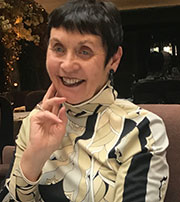 Cheryl has enjoyed a long career as a dancer, choreographer, director, educator, researcher and advocate. In 2014 she was honoured for her service in these areas with an Order of Australia and in 2003 she received the Lifetime Achievement Award at the Australian Dance Awards. Currently she acts in an advisory capacity to the arts sector, as well as continuing academic publishing, examinations and reviews.
Cheryl has enjoyed a long career as a dancer, choreographer, director, educator, researcher and advocate. In 2014 she was honoured for her service in these areas with an Order of Australia and in 2003 she received the Lifetime Achievement Award at the Australian Dance Awards. Currently she acts in an advisory capacity to the arts sector, as well as continuing academic publishing, examinations and reviews.
From 2016-2018 she was Inaugural Head of Cultural Leadership and Director of Graduate Studies at NIDA (National Institute of Dramatic Art). As Secretary General of World Dance Alliance (2009 – 2016) Cheryl coordinated and convened two Global Summits (Brisbane, 2008 and Angers, France, in 2014)
After working as a full-time dancer and choreographer, Cheryl became Dance North’s founding Artistic Director (1985-1996) touring nationally and internationally. From 1988 Cheryl began an ongoing close engagement with Asia where she directed twenty exchange programs. From 2006, her creative practice shifted to that of director / creative producer, working on multi-site works with Australian and overseas artists (Accented Body 2006 Brisbane Festival; Naik Naik 2013 Melaka). In 2015 her most ambitious program Twilight, in collaboration with Ng Chor Guan, was awarded an Australian Dance Award. Twilight was an outdoor, intergenerational promenade performance in Townsville across 14 sites with 167 performers from 12 diverse community groups.
As an academic, Cheryl served as Head of Dance at Queensland University of Technology (2000-2006), and a further 8 years in leadership positions for Creative Industries Faculty. Her publications encompass intercultural, interdisciplinary, interactive, and site specific performance, practice-led research and cultural leadership.
Panel: Park Jisun, Producer of Producer Group DOT from Korea
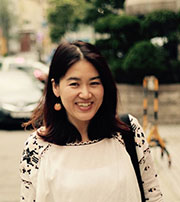 Park Jisun is a creative producer, researcher, and arts policy advisor. She is a co-founder of Producer Group DOT, which is a company of independent performing arts producers that formed in August 2014. About for 20 years, she has experienced in several performing arts festivals as a head of programming in Chuncheon International Mime Festival, Seoul Performing Arts Festival, etc. and worked as a general manager in KAMS (Korea Arts Management Services), responsible for PAMS (Performing Arts Market in Seoul) and implementing strategies to develop international market for Korean theatre, dance and music companies. As a creative producer, she has been working without boundaries of genre, producing interdisciplinary works locally and internationally. She developed and ran an international residency, which is called Namwon Sound Artist Residency. She also conducted a city project called Connected City, with questions about how art connects with people in the city and how people relate to places in an increasingly complex and changing city. She has a great interest in creating a new network without hierarchy in Korea and Asia and co-initiated new networks and meetings such as APP (Asian Producers’ Platform), CAN (Circus Asian Network) and The Producer. She believes that these new form of networks can create a healthy arts ecological system. Recently she has begun new explorations with artists on various subjects including cities, boundaries, technology and arts. She has been initiating collaboration between artists and non-artists to explore the contemporariness of the arts.
Park Jisun is a creative producer, researcher, and arts policy advisor. She is a co-founder of Producer Group DOT, which is a company of independent performing arts producers that formed in August 2014. About for 20 years, she has experienced in several performing arts festivals as a head of programming in Chuncheon International Mime Festival, Seoul Performing Arts Festival, etc. and worked as a general manager in KAMS (Korea Arts Management Services), responsible for PAMS (Performing Arts Market in Seoul) and implementing strategies to develop international market for Korean theatre, dance and music companies. As a creative producer, she has been working without boundaries of genre, producing interdisciplinary works locally and internationally. She developed and ran an international residency, which is called Namwon Sound Artist Residency. She also conducted a city project called Connected City, with questions about how art connects with people in the city and how people relate to places in an increasingly complex and changing city. She has a great interest in creating a new network without hierarchy in Korea and Asia and co-initiated new networks and meetings such as APP (Asian Producers’ Platform), CAN (Circus Asian Network) and The Producer. She believes that these new form of networks can create a healthy arts ecological system. Recently she has begun new explorations with artists on various subjects including cities, boundaries, technology and arts. She has been initiating collaboration between artists and non-artists to explore the contemporariness of the arts.
Panel: Ng Chor Guan, Co-founder of Toccata Studio from Malaysia
 Ng Chor Guan is a prolific artist whose diverse body of work is rooted in the contemporaneous currents of technology and proves to transcend categories in the performing arts based in Malaysia. Guan also becomes familiar face in international arts festivals across the globe. An internationally-acclaimed composer and artist, Guan’s work has won him scholarships, residencies and awards across the continents: in 2009, a Grand Prize in the Clermont-Ferrand Short Film Festival for film music and again in the Art Film Fest in Slovakia (2010). A notable scholarship Guan has received is the Goethe Institut Scholarship to Bonn, Germany, Guan has selected in the programs Berlinale Talents (2015) and OneBeat, an initiative by the federal government of the United States. He has worked as musical director with DanceNorth Australia in their 30th anniversary production, Twilight, a winning project of the Australian Dance Awards. His experiences in improvisation also led him to improve sessions with the Tanztheater Wuppertal Pina Bausch and the Tanztheater Trier in Germany. In the last quarter of 2016, he was selected by the Austrian Ministry of Culture to participate in a residency program of 3 months in Vienna, and has had the privilege to guest lecture at the Academy of Fine Arts in Vienna. His works has been shown in Kuala Lumpur and Taipei. 2019, Guan got invited to conduct London Improvisers Orchestra also as guest artist to lead the theatre improvisation workshop at Royal Central School of Speech and Drama in U.K. His most recent project with Toccata Studio, titled ‘2020’, is a project five years long: a multidisciplinary performance powered by the concepts of multiple futures and time travel, 2020 is both a meditation on the future and an active progression into the future has been involve artists, scientists and non-performer.
Ng Chor Guan is a prolific artist whose diverse body of work is rooted in the contemporaneous currents of technology and proves to transcend categories in the performing arts based in Malaysia. Guan also becomes familiar face in international arts festivals across the globe. An internationally-acclaimed composer and artist, Guan’s work has won him scholarships, residencies and awards across the continents: in 2009, a Grand Prize in the Clermont-Ferrand Short Film Festival for film music and again in the Art Film Fest in Slovakia (2010). A notable scholarship Guan has received is the Goethe Institut Scholarship to Bonn, Germany, Guan has selected in the programs Berlinale Talents (2015) and OneBeat, an initiative by the federal government of the United States. He has worked as musical director with DanceNorth Australia in their 30th anniversary production, Twilight, a winning project of the Australian Dance Awards. His experiences in improvisation also led him to improve sessions with the Tanztheater Wuppertal Pina Bausch and the Tanztheater Trier in Germany. In the last quarter of 2016, he was selected by the Austrian Ministry of Culture to participate in a residency program of 3 months in Vienna, and has had the privilege to guest lecture at the Academy of Fine Arts in Vienna. His works has been shown in Kuala Lumpur and Taipei. 2019, Guan got invited to conduct London Improvisers Orchestra also as guest artist to lead the theatre improvisation workshop at Royal Central School of Speech and Drama in U.K. His most recent project with Toccata Studio, titled ‘2020’, is a project five years long: a multidisciplinary performance powered by the concepts of multiple futures and time travel, 2020 is both a meditation on the future and an active progression into the future has been involve artists, scientists and non-performer.
Moderator: Shawn Chua, Dramaturg from Singapore
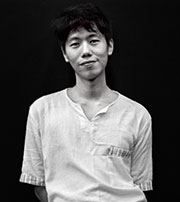 Shawn’s work engages with embodied archives, uncanny personhoods, and the participatory frameworks of play. He has presented his research at the Asian Dramaturgs’ Network, The Substation, State of Motion, and Performance Studies international (PSi), and his works have been presented under Singapore International Festival of Arts, Esplanade Presents: The Studios, Amorph! Performance Art Festival, Prague Quadrennial and Panoply Performance Laboratory. He holds an MA in performance studies from New York University’s Tisch School of the Arts, and was awarded the National Arts Council (NAC) Scholarship in 2012. He currently teaches at LASALLE College of the Arts and serves on the PSi Future Advisory Board. Shawn is also a founding member of Bras Basah Open School of Theory and Philosophy and is part of the collective that runs soft/WALL/studs.
Shawn’s work engages with embodied archives, uncanny personhoods, and the participatory frameworks of play. He has presented his research at the Asian Dramaturgs’ Network, The Substation, State of Motion, and Performance Studies international (PSi), and his works have been presented under Singapore International Festival of Arts, Esplanade Presents: The Studios, Amorph! Performance Art Festival, Prague Quadrennial and Panoply Performance Laboratory. He holds an MA in performance studies from New York University’s Tisch School of the Arts, and was awarded the National Arts Council (NAC) Scholarship in 2012. He currently teaches at LASALLE College of the Arts and serves on the PSi Future Advisory Board. Shawn is also a founding member of Bras Basah Open School of Theory and Philosophy and is part of the collective that runs soft/WALL/studs.
Public Panel Day 2: Artistic Residencies – From participants to organisers
Session Content
Introduction:
Keni Soeriaatmadia introduces the topic, explaining that they will discuss residency spaces, the policies for facilitating artists’ practice and creation. She then introduces the panelists and their backgrounds in relevance to the discussion and the agenda for the panel.
Presentation:
Bilqis Hijjas
Bilqis Hijjas began her presentation with talking about the residency space, Rimbun Dahan, which is located forty-minutes outside of Kuala Lumpur, Malaysia. It is the oldest and largest residency space in Malaysia, and among the oldest in Southeast Asia. It is a private residency belonging to her father and renowned Malaysian architect Hijjas Kasturi and his wife Angela Hijjas, who also live on site. Buildings on the site include modern buildings designed by Hijjas Kasturi and also heritage buildings that were brought to the site from Perak and Penang. Rimbun Dahan is a 14-acre garden of indigenous Southeast Asian plants, and apart from artist studios and accommodation, there is an underground gallery space usually reserved for significant, longer residencies, a swimming pool, and dance studios. One of the main programs offered (which has been discontinued in 2013) is the Malaysia/Australia arts residency, a year-long residency which began in 1994, open to visual artists; fellow panelist Chang Yoong Chia is a former participant in the residency. At the end of their residency period artists are required to show their work in the form of an exhibition.
The program was very successful, but has been discontinued due to it being very resource-intensive. Bilqis notes that it served the Australian and Malaysian artists differently: offering the former a space to focus solely on their practice while being in a space culturally different from what they are used to; while the latter were often able to jump-start their career in terms of creation and visibility especially among collectors and galleries. The residency later developed to include other art forms, such as writing, performing arts, sound, and more. The residencies are mostly self-funded by the owners of Rimbun Dahan, sometimes working with partners such as Asialink of Australia, New Zealand’s Asia New Zealand Foundation, ResArtis, and also working on projects with cultural institutes such as the Goethe-Institut, the British Council, the Japan Foundation and more.
Apart from the longer residencies, which are more open-ended, Rimbun Dahan also has shorter, intensive projects that involve larger groups, organized by Bilqis herself, and usually have a more structured output. She listed some of them, including Work It! (2012) a meeting for Asian and European women in the arts, the Audience Development in Dance Workshop in 2013, the ResArtis Meeting of Southeast Asian Arts Residencies in 2016, and the Southeast Asian Choreolab, which began in 2014 and is an ongoing project. There is also the Southeast Asian Artists Residency funded by Rimbun Dahan, which span between 1-3 months, where artists submit proposals to be considered for selection. To help sustain the residency, there is also a program that is open to professional international artists in a user-pay model.
Bilqis spoke about challenges with the residency next: one of the challenges is that of collaboration: that at some point they had hoped for the artists (in the longer residencies) to work together, but notes that visual artists in general have very individualistic practice and are not usually inclined to work together. However, she then notes that there is a certain synergy when artists do come together: she recounts the story of a painting featuring two artists in residency who were in a romantic relationship, painted by another artist who was also in residence at the time. She also jokes about certain patterns in the artists’ engagement with their surroundings they have observed over the years: many were fascinated with the water lilies on site, and some were very interested in how Malaysian drinks are often packed in plastic bags when ordered to-go. Bilqis ends her presentation in a wistful tone – one of the main challenges with the residency is sustainability, and looking further ahead yet, succession: like many residencies of its sort, due to it being a private center and residency funded by her parents, the future of Rimbun Dahan is an unclear one.
Mami Odai
Mami Odai opened her presentation with an aerial view video of the residency site, the Sapporo Tenjinyama Art Studio, located in the north of Japan, in the island of Hokkaido. The building is located in a park outside of the city centre of Sapporo, and Mami Odai serves as the organiser for the residency. Mami Odai began her career in the arts as a manager for artists, working mainly with sound artists. She then moved on to working for an international art festival where she worked with site-specific artists and was responsible for facilitating their creative processes from the very beginning of each project, which deepened her interest in her involvement with the creative process and led her to a career in artist residencies. She currently works mainly with visual and sound artists, and is also beginning to work more with art practitioners in the performing arts. She believes that while the artist residency program is commonly known for playing a supportive role in an artist’s career, what she finds more valuable is the relationship that is built within a residency, and the network that forms as a result.
Next she began describing the Sapporo Tenjinyama Studio in detail, explaining that it was once a hotel the local town council built to attract tourists and visitors; the plan did not work as well as expected and the hotel also drew discontent from the local communities as it took up what was previously public space (parts of the park) and turned it into spaces that were for hotel guests only. In 2014 the town council wished to transform the hotel into a multipurpose space that would allow the local residents to enter and utilise the space. The residency site began with minimal resources: funding for a public building manager, and the existing building, which consisted of thirteen guest rooms with bathrooms attached. Mami Odai worked with the community project coordinator team to transform the abandoned hotel into a space that has both artist studios and public space for the locals. 2019 is their sixth year of running the residency, and they have the biggest number of studios in Japan, attracting the most number of artists as an arts residency.
Mami Odai goes on to list the programs at the residency site, such as self-funded residency, one for networking and a residency open to international artists, which is a fully-funded program. She goes further into detail about the program: it is usually a research-based program, and the participating residency artists are from varying practices. The policies for facilitating the artist’s process, like Rimbun Dahan’s, is an open one, where the artist and not the residency makes the decisions and initiates their ideas. Failures and misunderstandings are considered common and part of the process, and are welcome in the residency program.
She then showed statistics and figures that were about the use of resources at the residency, which covered production, research and accommodation, the last being for artists who wished to stay at the studios while working or presenting their work in the city center. Mami Odai also spoke about infrastructure: the residency program connects artists with the facilities or infrastructure existent in the city center; this is a more sustainable way of facilitating the presentation of work than maintaining equipment or infrastructure at the residency site. The studio space for artists exists beyond the residency site, and can include the city and the island of Hokkaido itself: Mami Odai suggests that because Hokkaido is a relatively quieter province, it allows the artists to focus on their practice with very little distraction.
Next, she speaks about how contrary to popular belief, the idea of the traveling artist and artist residencies are not Western concepts imported to Japan in the 1990s. However, artists in Japan have always traveled around, records of their journeys can be found since the medieval times. In present day Japan, where artists are accustomed to traveling in their practice, sometimes the artists have no choice but to move away from home: for example, during the great earthquake of 2011, many artists had to evacuate from their homes in the city to smaller towns. She traced the development of artist residencies in contemporary Japan, beginning from the 1990s’, where residency programs were mostly supported by the government and town councils, to the 2000s’, where these programs gradually became privately funded, and grew in tandem with the blooming of localism, and in the years since 2011, more new ways have opened up to artists and this includes new avenues of practice and mobility. Mami Odai also mentions briefly how artist residencies have now become more flexible and are not simply for artists anymore: art forms have gradually become more research and/or community-based, and artists often need help and support from other fields, they have also become more likely to work with local residents or communities, shifting from an individualistic practice to a more collaborative one. She ended her presentation by listing ways to get in contact, such as ResArtis, and other residency networks available online.
Chang Yoong Chia
Chang Yoong Chia began his presentation by saying that he has always wished to share his experience with residencies, and thanked the organiser for the opportunity. In his opinion, an artist residency program constitutes of three things: the environment – the residency site and its surroundings, time, and the people one encounters at the residencies. His presentation, titled ‘Following the Drying Leaves’ refers in part to his work with found leaves on the residency sites.
Chang Yoong Chia then shares his experience at Rimbun Dahan in 2006, where he spent a year in residence. He reveals that in painting he follows his feelings and they play a big part in his creating a world on canvas; in Rimbun Dahan where he was surrounded by nature and in isolation, he developed a private world where he incorporated images and experiences from his surroundings. In the painting there is a parallel image of a milipede and a train, the first, a sight from the forest around him, and the latter is from the KTM ride on which he traveled to Rimbun Dahan. He jokes that apart from the water lilies Bilqis had mentioned in her presentation, he also encountered the local fauna in the form of insects. His next slide was a self-portrait created with termite wings that he collected after a rainstorm brought termites into his studio. The self-portrait was made with three different types of termite wings, and he arranged and glued them to form his own image. Another insect story involves a spider: one day he found a dead insect wrapped in a spider’s web, and it resembled a sailboat. From this mundane event he created art; Chang Yoong Chia painted a seascape on a small seashell and placed the dead insect sailboat on it, titling it ‘The Final Voyage of C.Y.C.’. At the end of the year-long residency period in his exhibition were more small works: he had painted self-portraits on small seashells and exhibited them alongside his larger paintings. He also exhibited among other works, a piece created with hollowed-out chicken eggs, which he mounted on a clockwork mechanism that rotates in one-minute narratives. In his residency period at Rimbun Dahan he also began the development of one of his larger projects, he began working with leaves, making images on the leaves with cutouts. His work with leaves were also exhibited, hanging from the ceiling of the gallery space, bringing into the atmosphere the movement and nature from the forest environment outside.
He then goes on to share another residency experience, this time in Jogjakarta in 2010, where he was at the Tembi Contemporary program for two months. During his time spent in Jogjakarta he that included singing of pop music. These experiences were incorporated into Chang Yoong Chia’s work and development of making art with leaves. He collected large leaves from the environment and dried them, then made cuts and painted on them. Among the series of images made on the leaves is one titled ‘Cina Totok’, where a set of four leaves explores the image of a Chinese person in Indonesian society: two of the leaves have the Chinese figure depicted in expensive cars, one a red sports car and another a black limousine with a driver in front.
While he was there, the Merapi mountain had erupted, and it was raining volcanic ash; he attempted to evacuate from the city first by airplane, then by train and by bus but tickets were all sold out. Later he was able to leave for Bandung with an artist friend’s hired local driver, who brought the artists along with his family in evacuation. This encounter with nature as a destructive force led him to reconsider mobility as an artist and a foreigner, and he wondered about the people who are not able to leave, and how they have been living alongside earthquakes and erupting volcanoes. He observed that while the locals went about their daily lives as usual, they also turned towards belief systems; there were rituals that involved the shadow puppets to appease the volcano. He thinks that art can be recast as ritual or a coping mechanism, small rituals for the everyday and big ones which fend off disasters.
The next residency experience he spoke about was one in Bangalore, India, at 1ShantiRoad where he spent a month in residence. He found the city filled with beautiful contrasts: flower markets juxtaposed against cows eating rubbish in backlanes. India to him is a familiar place, bearing many similarities to Malaysia, especially considering our common colonial past. At the Lalbagh Botanical Garden he picked the leaves for his work, which features a sense of a shared colonial past, his impressions of India, and depictions of young lovers and melodramatic love stories, reminiscent of Bollywood movies he had seen as a child. Later the work was adapted into the comic form; the paintings and cutouts on the leaves also resemble shadow puppets, whose performance and narratives are derived from the Ramayana and Mahabharata, both classical Indian texts.
He next spoke about his residency experiences in Japan, where he has been three times: at his second experience he wished to explore the idea of art as ritual, and considering the idea of energy in rituals, he wanted to bring Malaysian heat to wintry Sapporo for his residency. He decided to connect batik with the Japanese dyeing tradition, working with the wax used for batik that needed to be melted, solidified and melted again for the patterns to form on the batik. To this process he added the element of ice, transforming it into an alchemical one; he then kneaded the wax before it completely cools to form sculptures. While considering the idea of ‘heat’ Chang Yoong Chia also thought of sustenance as a concept, and collected a crab shell from a friend and painted a deity-like figure on it. In another piece he combined a crab shell with mussel shells to form a tiger; he also collected scallop shells from a restaurant and painted a comic on them.
One of his other residency experiences in Japan is in Shiraoi, Hokkaido, where he spent a month in the small town near the ocean. He collected plastic from the ocean and leaves from the nearby forest reserve; while he was there, there was recently a strange bear outbreak in Hokkaido, and the forest ranger he spoke to told him stories about bears that went into human populated areas. He visited farms producing Shiraoi beef, and sighted foxes, but the bears were a lingering presence. At the cafe where he exhibited his work with leaves, he overheard an exchange about coffee between the old couple who owns the place, and painted it onto a ceramic bowl. Among the work he exhibited was a screen with a singing bear, a Shiraoi bull playing the piano, and a fox playing the flute; the work was inspired by a concert held at the cafe in 2011, which Chang Yoong Chia found on the internet while researching the cafe. He ended the presentation with the video of the concert in 2011.
Q&A:
The moderator, Keni Soeriaatmadia, then asked Chang Yoong Chia about the number of residencies he has been to, and he reveals that he has not been to many but they have been life-changing experiences for him, especially the one at Rimbun Dahan, which was the longest residency (a year) he has been to. Residencies offer him a chance to be in a completely different environment physically and culturally, where the differences help him learn about himself and his practice. He finds residency programs puzzling as they seem to offer an artist everything they might want, and he does not understand why they do it. When asked if the discomfort of being out of one’s comfort zone is a source of creativity or self-identification, Chang Yoong Chia says that both are important to him, and while he does not seek discomfort, he is also often restless, and observes that many artists might want both stability and a sense of excitement in their lives, driving them to do what they do. Keni Soeriaatmadia asks Bilqis Hijjas why she chose to offer the residency program to artists, who first clarified that the residency program belongs to her parents, then jokingly explained that the program began when her father, architect Hijjas Kasturi, had built many projects on the Rimbun Dahan land, and when unsure what to do with the buildings, decided to offer them to artists as a residency program. She elaborated that her father had been to an artist’s residency once in Urbino, Italy; this experience combined with their interest and love for art made him realise the value of a residency space, which led to their creating the program, which is now run by her mother. When asked how much the residency impacts the immediate community, she explained that they are not very well-liked: the area is a Malay reserve area populated by a working class community, and there is not much interaction between Rimbun Dahan and the local community. While there has been attempts at outreach in the form of open studios, workshops, they have mainly attracted visitors from Kuala Lumpur and not the local community. She thinks that Rimbun Dahan is viewed with some distrust, partly because of the non-Islamic practices of certain artists, and also partly because the residency space is open to gay couples. Bilqis Hijjas mentions briefly that she taught a dance program to local teenagers at Rimbun Dahan 20 years ago, where the participants were keen to dance and dress up like celebrities in music videos, and perhaps the class enabled some of them discover their sexuality, which might have all led to further distrust. Chang Yoong Chia added that the local community around Rimbun Dahan is still quite conservative; he suggests that the arts in Malaysia is less established and people are suspicious of art, compared to elsewhere, giving Jogjakarta as an example, where an art exhibition might attract members of the local community; in general, the arts in Malaysia have to tread far more carefully because of the conservative views at large.
Keni Soeriaatmadia asks how might a residency or artists fill in the gaps to reach the audience who might be apprehensive towards art, and Bilqis Hijjas describes the audience in terms of contemporary art in Malaysia as more likely to be urban and/or elite, and tends to be English-speaking, and acknowledges it as a problem, but one that artists are not entirely responsible for. The moderator suggests that in the many roles that artists take, perhaps there can be something done about breaching the issue. Mami Odai suggests that while there is a possibility of change, it is very small. She personally does not expect art to be the solution, and instead focuses on building friendly networks which might in turn ease tensions between art and culture.
Keni Soeriaatmadia began her presentation by speaking of Sasikirana, a yearly choreolab and dance camp that she has been running since 2015. It is a short residency program lasting for five to ten days, with support from the ministry or the corporate sector; in 2019 they received support from the local government in Bandung for the first time. She considers Sasikirana a place where dancers come together to ‘learn to unlearn’; it is a platform for questions for the contemporary dance form in Indonesia. With a background as a dancer in the Balinese tradition and having danced for more than 25 years, she had wished to explore contemporary dance but found very little resources on the topic.
Sasikirana accepts 25 dancer-participants to ‘be confused together’, their backgrounds ranging from Aceh to Papua of different dance traditions. Keni Soeriaatmadia explains that while contemporary art is easy to understand in the Indonesian context, there is a need to question conventions and institutions that are usually theory-focused and give little direction in terms of in terms of practice. The choreolab also serves to map dance potentials in the country, where on 17000 islands there exists over 450 ethnic groups, who each have their own dance or body movement practice. The choreolab also wishes to address the demand for contemporary dance works, which is not yet reached in terms of dancer capacity.
In the choreolab, Keni Soeriaatmadia jokes about the intensive, military-like training, noting that the participants call the mentors ‘dementors’, and that the suffering serves as a means for the dancers to connect to each other. Dancers unlearn their bodies in the camp, as the practice across the traditions are vastly different from one another, with some rooted in the silat tradition, some philosophical and others physical in practice. The camp serves as an equalising space, allowing the dancers from diverse backgrounds to see one another as equal and develop a fellowship and a sense of belonging. In the research process of the camp, dancers research one another and their practice, coming together to question art and dance as cultural representation.
Keni Soeriaatmadia notes that the social status of dancers and artists in present Indonesia is lower than it used to be in the past, where artists were philosophers in the village. Artists in the present day are considerably less supported in their career endeavours, and she elaborated by saying that when asked if dance can serve diplomatic functions for the country, many would say yes, but when asked if they would support their child pursuing a dance career, many would hesitate and often say no. She suggests that dancers and choreographers can perhaps change this by negotiating intuition with intellectuality, connecting their creativity with an open mind and empathy, which is highly important especially in the current political climate. She also adds that skills such as critical thinking, character building and learning self-identification is important for young dancers in progress.
The choreolab and camp have now received more than 100 dancers throughout Indonesia, and she notes that there is a concerted shift away from centering Javanese dancers, who already have a lot of resources and opportunities available to them, and instead have participants from regions such as Sumatra, Kalimantan, Sulawesi and more.
In her presentation she shows a teaser video of the choreolab in Tanjung Pinang, an island that serves as a cemetery for kings, and the land of the tradition of Gurindam Dua Belas. Four choreographers from different parts of Indonesia begin their work by researching the history of the community and interacting with local traditional dancers, who are mostly apprehensive of contemporary practice. This apprehension is common in most regions except Java, and in the video she shows young theatre performers and dancers in their first contemporary show, staged with an area of development and construction of the island as the backdrop for the performance.
Keni Soeriaatmadia suggests that the apprehension towards contemporary art which is common in most Southeast Asian countries, can be eased by utilising contemporary practices as a means for reinterpretation and reinvention of traditions. She notes that tradition is rarely sustainable without vigilant reconsideration and reinterpretation. The artist residency can be a site for negotiation between the artistic and the many bodies and artist inhabits, such as the biological, the social, the spiritual and the political. She refers to Chang Yoong Chia as an example, who in his residency experience in Jogjakarta, connected with the local community via empathising with their plight in the face of the eruption of Mount Merapi. She concludes her presentation by noting that the artists’ residency program is a valuable experience for artists, as it offers them space and clarity to develop their practice in peace.
A member of the audience asked if the residency programs are open to dance companies or groups of theatre practitioners apart from artists with individual practice. Bilqis Hijjas answered first by stating that it is more challenging to accommodate choreographers, dancers or small groups because they need more support in general, compared to writers or visual artists. There have been companies who go to Rimbun Dahan to work on a piece as a group, such as the Amrita Performing Arts from Cambodia, and T.H.E. Dance Company of Singapore. She has also helped connect foreign choreographers with local dancers but it is a resource-intensive endeavour.
To close the session, Bilqis Hijjas and Mami Odai restated several ways to get in touch, such as the ResArtis network, and briefly mentioned that they also usually receive applications from artists who found them via word-of-mouth. Chang Yoong Chia advised artists to apply for residencies however daunting the application process might be, he thinks that the risk is well-worth taking, and while rejections are common, they should not be taken personally. Keni Soeriaatmadia adds that the residency experience is especially valuable in the difference in the everyday that it offers to the artist: the new sights, sounds, and conversations. She invites the audience to speak further with the panelists outside of the forum and jokes that those who have resources should consider building residency spaces as support for artists.
Panel: Bilqis Hijjas, Dance Program Director of Rimbun Dahan from Malaysia
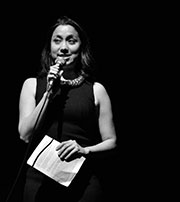 Bilqis Hijjas has been running the dance program at Rimbun Dahan since 2006. Rimbun Dahan is a private arts centre outside Kuala Lumpur, owned and run by her family, and one of the most established residency venues in Southeast Asia. Since 1994, Rimbun Dahan has provided residencies for periods up to 12 months for hundreds of artists across disciplines to focus on developing their practice and experiencing life in Malaysia. The 14-acre indigenous Southeast Asian garden provides a unique sense of place, connecting residents to the natural world. The dance program offers residencies for contemporary dance choreographers, and also presents the annual Southeast Asian Choreolab, a residential networking and capacity building intensive for emerging choreographers from the region.
Bilqis Hijjas has been running the dance program at Rimbun Dahan since 2006. Rimbun Dahan is a private arts centre outside Kuala Lumpur, owned and run by her family, and one of the most established residency venues in Southeast Asia. Since 1994, Rimbun Dahan has provided residencies for periods up to 12 months for hundreds of artists across disciplines to focus on developing their practice and experiencing life in Malaysia. The 14-acre indigenous Southeast Asian garden provides a unique sense of place, connecting residents to the natural world. The dance program offers residencies for contemporary dance choreographers, and also presents the annual Southeast Asian Choreolab, a residential networking and capacity building intensive for emerging choreographers from the region.
Bilqis is also the president of Malaysian dance service organisation MyDance Alliance, a lecturer in dance criticism at University Malaya, editor of Malaysian arts criticism platform Critics Republic, Southeast Asia vice president of World Dance Alliance Asia-Pacific, and one of the core members of Asia Network for Dance. Bilqis holds a Bachelor of Arts in Social Studies from Harvard University, and post-graduate degrees in choreography, anthropology and arts politics from Victorian College of the Arts, Australian National University and New York University.
Panel: Mami Odai, Director of Sapporo Artists Residency from Japan
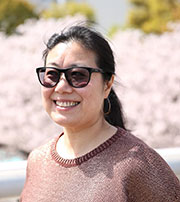 Mami Odai was born in Hiroshima City, 1966 and has been working on art project planning and management, artist-in-residence project design and site administrator. She involved in a great number of activities, including domestic and foreign AIR projects such as S-AIR (Hokkaido), TransArtists (the Netherlands), the ARCUS Project (Ibaraki), and VISUAL ARTS FOCUS (France), as well as related background research, AIR project design, and environmental improvement for creative activities. She is the AIR Director of the Art and Research Center, Sapporo Tenjinyama Art Studio.
Mami Odai was born in Hiroshima City, 1966 and has been working on art project planning and management, artist-in-residence project design and site administrator. She involved in a great number of activities, including domestic and foreign AIR projects such as S-AIR (Hokkaido), TransArtists (the Netherlands), the ARCUS Project (Ibaraki), and VISUAL ARTS FOCUS (France), as well as related background research, AIR project design, and environmental improvement for creative activities. She is the AIR Director of the Art and Research Center, Sapporo Tenjinyama Art Studio.
Panel: Chang Yoong Chia, Independent Artist from Malaysia
 Chang explores different kinds of materials but with the sensibility of a painter. He focuses on his country of Malaysia – where ethnicity, religion and history are intricately mixed – and stories of individuals living there, and turns them into artworks. Chang’s works ranging from paintings on canvases, painted animal and plant remains and household objects, stamp collages and embroidery explore wide-ranging topics such as politics, religion and culture and nature. The repeated gestures and complex methods reflect a commitment with craft in which the labour adds another layer of meaning to the work. Placing an importance on the material, he believes that each medium has its own characteristics and symbolism thus new interpretations are conjured when found or mundane objects are transformed in an almost alchemical fashion.
Chang explores different kinds of materials but with the sensibility of a painter. He focuses on his country of Malaysia – where ethnicity, religion and history are intricately mixed – and stories of individuals living there, and turns them into artworks. Chang’s works ranging from paintings on canvases, painted animal and plant remains and household objects, stamp collages and embroidery explore wide-ranging topics such as politics, religion and culture and nature. The repeated gestures and complex methods reflect a commitment with craft in which the labour adds another layer of meaning to the work. Placing an importance on the material, he believes that each medium has its own characteristics and symbolism thus new interpretations are conjured when found or mundane objects are transformed in an almost alchemical fashion.
Chang has exhibited in various exhibitions including the 3rd Fukuoka Asian Art Triennale, Japan, Open Sea in Musee d’Art Contemporain du Lyon, France, Journey in Israel Museum, Welcome to the Jungle in Yokohama Museum of Art & Contemporary Art Museum Kumamoto, Japan. He was invited by S-AIR twice as an Artist in Residence, in 2008, under the JENESYS programme and again in 2017. He is a finalist in the APT Signature Art Prize 2011. In 2018, the National Art Gallery of Kuala Lumpur, Malaysia his mid-career survey exhibition.
Moderator: Keni K. Soeriaatmadja, Program Director of NuArt Sculpture Park from Indonesia
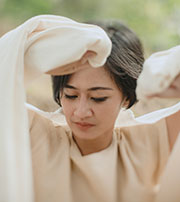 Graduated from Ceramic Studio, Fine Arts Study Program in The Faculty of Fine Arts and Design, Bandung Institute of Technology (ITB) in 2002, Keni received The Ganesha Prize Award from the institution as the Student of Excellence in 2002 and for that was given a grant to do a short program in The Netherlands. She choose to take a short module in The Amsterdam School of The Arts, focusing on Museology, from which she learned the significance roles of curators and program directors in museums and art institutions. Keni finished her master degree in Anthropology at the Faculty of Social and Political Studies at the University of Padjadjaran, Bandung, in 2019.
Graduated from Ceramic Studio, Fine Arts Study Program in The Faculty of Fine Arts and Design, Bandung Institute of Technology (ITB) in 2002, Keni received The Ganesha Prize Award from the institution as the Student of Excellence in 2002 and for that was given a grant to do a short program in The Netherlands. She choose to take a short module in The Amsterdam School of The Arts, focusing on Museology, from which she learned the significance roles of curators and program directors in museums and art institutions. Keni finished her master degree in Anthropology at the Faculty of Social and Political Studies at the University of Padjadjaran, Bandung, in 2019.
Dancing and performing arts has been a big part of Keni’s artistic platform. She has been dancing traditional Balinese dance since she was very little, and never stops since then. She realizes that Indonesian dance and performances has the ability to represent the younger generation’s spirit inside the local and traditional wisdom, and beyond that has the ability to build critical thinking towards the socio-cultural development in the society. Therefore, she created Sasikirana Dance Camp, a contemporary dance platform that are opened for young emerging dancers to get an intensive workshop in order to increase their technical skill, knowledge, and conceptual frame work. The dance camp has successfully being held annually since 2015 in NuArt Sculpture Park, an art museum and gallery owned by Nyoman Nuarta -Indonesia’s sculpture maestro where Keni currently works for as the program director.
Group Discussion
Group A: Lead by Ng Chor Guan and Jisun Park
Q1. How to balance different elements in a creative process?
Q2.What position should the audience be given in the creative process of production? How can one enable the audience to newly experience something? What kinds of relationships should one create with the audiences?
Discussion Summary
Audience participation should be included in the balance of creation: allowing the audience to have a say in how the work is created, where conventionally the power and control is entirely in the artist’s hands. They discussed a performance where a chatroom was involved in the audience experience, and a member of the audience tricked the artist into thinking that they were removed from the chatroom; it highlights the ease of both including and excluding a member of the audience in a virtual space, whereas to remove an audience physically would take concerted effort. Another story shared in discussing how far the audience is allowed in terms of engagement and participation is where in an improvisation performance a member of the audience went up onstage to play the piano and danced, and later told the artist that they have never been to an improvisation show where their behaviour was not considered ‘too much’. They also discussed the ways to balance collaborations as artistic director of a project, and how a horizontal collaboration allows the filling of blind spots and unknown zones of knowledge.
Group B: Lead by Cheryl Stock and Shawn Chua
Q1. What change in the arts ecology is most important for you? How will you contribute to that change in collaboration with others (in an interdisciplinary and intergenerational environment)?
Q2. How can cross-disciplinary collaborations illuminate more-than-human ecologies and networks?
Discussion Summary
Interdisciplinary collaborations change the process of creation; one aspect of thinking in interdisciplinary terms is thinking of accessibility, and the group discussion was focused on ways to accommodate and integrate one’s own work or platform for different communities.
Presenter discussed one of the strategies they discussed, mobility, and Cheryl Stock shared personal wheelchair stories through which she found that the world is not made for people with wheelchairs. Public spaces are not inclusive nor accessible in general, and when they are, are designed without user-testing by its target audience. In virtual spaces such as podcasts or magazines, it is important to avoid being prescriptive but instead communicate with and include minority voices in the creation process. Learning to have difficult conversations and learning to listen is also very important. Members of the audience shared examples of the visually-impaired perceiving the world differently: in a photography workshop for the blind they learnt to take pictures by sensing the world via sound, or heat; another example is a conversation about describing things to the visually-impaired, the modes of reference for what things seem like is very different.
Group C: Lead by Keni K. Soeriaatmadja, Bilqis Hijjas, Chang Yoong Chia and Mami Odai
Q1. What kind of research methods do you use for your artistic creation, and how much does the research affect the quality of your works?
Q2. In this time of climate crisis, what is the appropriate response from the artistic community regarding flying to work? What paradigm shifts may be required to adopt to this new environment? What does this mean for artistic development that depends upon mobility and international residencies?
Q3. How to reach an understanding/common ground between artists and organizing bodies in regards to divergent opinions and ideas about what artist residencies constitute?
Discussion Summary
Artists and their work often depend on global mobility, and arts practitioners have to fly often; artists are torn between wanting to live a life with lesser carbon footprint and needing to create work or participate in international residencies. In a round-up of research methods, the group has come up with: skill development, interviews, online research, studying materials, and learning about the cultural context and the community in which the art is going to be placed. For example, needing to learn about the different facets of theatre-going communities in order to know what sort of theatre to make; studying the meaning-making structures in the community one is in for context in creation. Or simply allowing the material to point the way for the artwork. An example they discussed is a project by one of the group members, where she researched and collected material from a very specific source, the community of queer Indian women.



